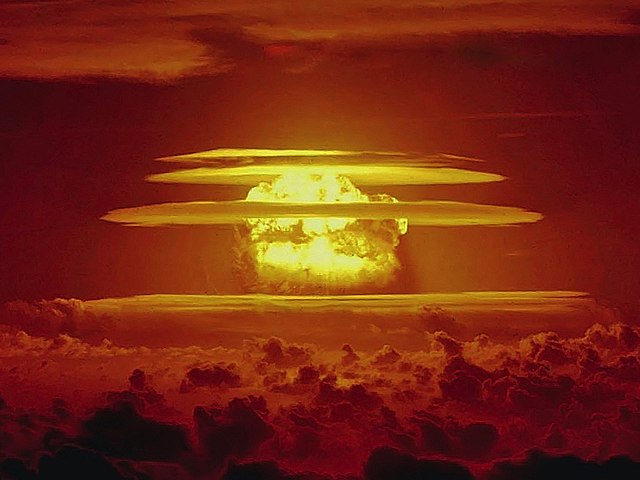Nuclear weapons tests are experiments carried out to determine the performance, yield, and effects of nuclear weapons. Testing nuclear weapons offers practical information about how the weapons function, how detonations are affected by different conditions, and how personnel, structures, and equipment are affected when subjected to nuclear explosions. However, nuclear testing has often been used as an indicator of scientific and military strength. Many tests have been overtly political in their intention; most nuclear weapons states publicly declared their nuclear status through a nuclear test.
The mushroom cloud from the Castle Bravo thermonuclear weapon test in 1954, the largest nuclear weapons test ever conducted by the United States
Subcritical experiment at the Nevada National Security Site
The Phoenix of Hiroshima (foreground) in Hong Kong Harbor in 1967, was involved in several famous anti-nuclear protest voyages against nuclear testing in the Pacific.
The first atomic test, "Trinity", took place on July 16, 1945.
The explosive yield of a nuclear weapon is the amount of energy released such as blast, thermal, and nuclear radiation, when that particular nuclear weapon is detonated, usually expressed as a TNT equivalent (the standardized equivalent mass of trinitrotoluene which, if detonated, would produce the same energy discharge), either in kilotonnes (kt—thousands of tonnes of TNT), in megatonnes (Mt—millions of tonnes of TNT), or sometimes in terajoules (TJ). An explosive yield of one terajoule is equal to 0.239 kilotonnes of TNT. Because the accuracy of any measurement of the energy released by TNT has always been problematic, the conventional definition is that one kilotonne of TNT is held simply to be equivalent to 1012 calories.
This photograph of the Trinity blast, captured by Berlyn Brixner, was used by G. I. Taylor to estimate its yield.





